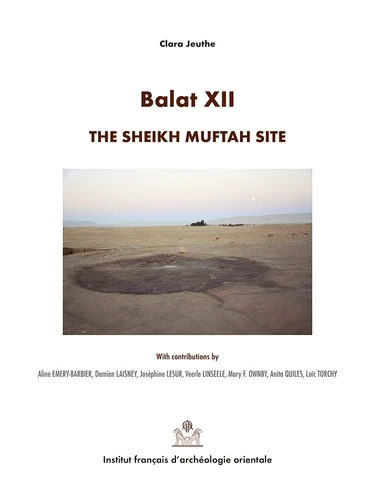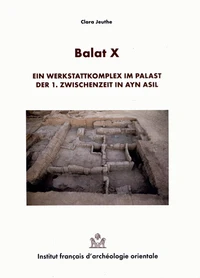Balat. Tome 12, The Sheikh Muftah site at Balat North
Par :Formats :
- Paiement en ligne :
- Livraison à domicile ou en point Mondial Relay indisponible
- Retrait Click and Collect en magasin gratuit
- Réservation en ligne avec paiement en magasin :
- Indisponible pour réserver et payer en magasin
- Nombre de pages272
- PrésentationRelié
- FormatGrand Format
- Poids1.364 kg
- Dimensions24,4 cm × 32,6 cm × 2,3 cm
- ISBN978-2-7247-0768-7
- EAN9782724707687
- Date de parution06/05/2021
- CollectionFouilles de l'IFAO
- ÉditeurIFAO
Résumé
The Sheikh Muftah site at Balat in the Dakhla Oasis in the Western Desert offers unique insights into the daily-life routine in a residential camp during the 3rd millennium BC. Its investigations revealed for the first time a well preserved stratigraphic sequence and dwelling features for the Sheikh Muftah group. These features together with the findings contribute to the discussion of subsistence and lifestyle of a non-sedentary group.
Dating back to a period when the Egyptian Pharaonic was significantly increasing, the research also answers to some questions about transcultural contacts and changes in the oasis.
Dating back to a period when the Egyptian Pharaonic was significantly increasing, the research also answers to some questions about transcultural contacts and changes in the oasis.
The Sheikh Muftah site at Balat in the Dakhla Oasis in the Western Desert offers unique insights into the daily-life routine in a residential camp during the 3rd millennium BC. Its investigations revealed for the first time a well preserved stratigraphic sequence and dwelling features for the Sheikh Muftah group. These features together with the findings contribute to the discussion of subsistence and lifestyle of a non-sedentary group.
Dating back to a period when the Egyptian Pharaonic was significantly increasing, the research also answers to some questions about transcultural contacts and changes in the oasis.
Dating back to a period when the Egyptian Pharaonic was significantly increasing, the research also answers to some questions about transcultural contacts and changes in the oasis.


